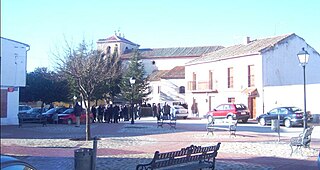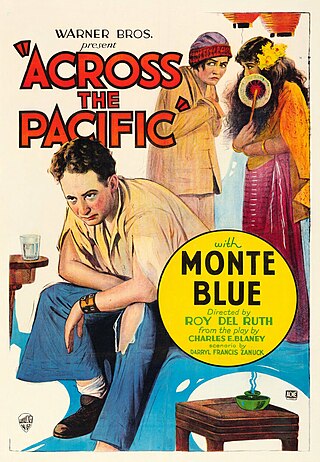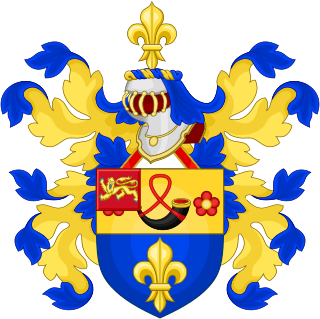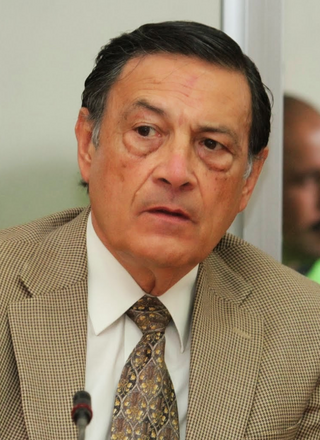Related Research Articles

Pedro de Alvarado was a Spanish conquistador and governor of Guatemala. He participated in the conquest of Cuba, in Juan de Grijalva's exploration of the coasts of the Yucatán Peninsula and the Gulf of Mexico, and in the conquest of the Aztec Empire led by Hernán Cortés. He is considered the conquistador of much of Central America, including Guatemala, Honduras, and El Salvador.

The province of Verbano-Cusio-Ossola is a province in the Piedmont region of Italy. It was created in 1992 through the fusion of three geographical areas which had previously been part of the province of Novara. The area flanking the western shore of Verbano forms the eastern part of the province; Cusio and its environs form the southern part; while the north and west of the province consist of the Ossola, a region of Alpine mountains and valleys. The ISO code for the province is VB.

Percy Reginald Lawrence-Grant was an English actor known for supporting roles in films such as The Living Ghost, I'll Tell the World, Shanghai Express, The Mask of Fu Manchu and Son of Frankenstein. He was host of the 4th Academy Awards ceremonies in 1931.

The Bridge of San Luis Rey (1929) is a sound part-talkie film released by Metro-Goldwyn-Mayer. The film was directed by Charles Brabin and starred Lili Damita and Don Alvarado. In addition to sequences with audible dialogue or talking sequences, the film features a synchronized musical score and sound effects along with English intertitles. The sound was recorded via the Western Electric sound-on-film process.
Miss República Dominicana 1983 was held on August 20, 1982. Nineteen candidates competed for the national crown. The winner represented the Dominican Republic at the Miss Universe 1983, Señorita República Dominicana Mundo Miss World 1983, and Señorita República Dominicana Café Reinado Internacional del Café 1983.
Señorita República Dominicana 1979 was held on December 20, 1978. There were 28 candidates who competed for the national crown. The winner represented the Dominican Republic at the Miss Universe 1979. The Señorita República Dominicana Mundo entered Miss World 1979.
Señorita República Dominicana 1970 was held on January 24, 1970. There were 28 candidates who competed for the national crown. The winner represented the Dominican Republic at the Miss Universe 1970. The Virreina al Miss Mundo will enter Miss World 1970 and Miss International 1971. Only the 27 province, 1 municipality entered. On the top 10 they showed their evening gown and answered questions so they could go to the top 5. In the top 5 they would answer more questions.
Señorita República Dominicana 1968 was held on January 24, 1968. There were 24 candidates who competed for the national crown. The winner represented the Dominican Republic at the Miss Universe 1968. The Virreina al Miss Mundo entered Miss World 1968. Only 25 provinces and one municipality entered. The top 10 wore their evening gowns and answered questions so they could go to the top from which five were selected.

Langa is a township and municipality in the province of Ávila. There are 527 inhabitants (2011).

Mademoiselle Midnight is a 1924 American silent drama film starring Mae Murray and directed by Murray's then husband, Robert Z. Leonard. The film was written by Carl Harbaugh and John Russell. The film was the final release of Metro under the Tiffany Productions banner, owned by the couple. A complete print of the film survives.

Across the Pacific is a 1926 American silent romantic adventure film produced by Warner Bros., directed by Roy del Ruth and starring Monte Blue. It was based on a 1900 play by Charles Blaney and J. J. McCloskey. The play had been filmed before in 1914 with Dorothy Dalton. It is unknown, but the film might have been released with a Vitaphone soundtrack.

Se solicita príncipe azul is a 2005 Venezuelan telenovela produced by Venevisión. The telenovela is an original story by Venezuelan playwright Indira Páez. Gaby Espino, Rafael Novoa, Daniela Alvarado, and Adrián Delgado starred as the main protagonists.

Voltea pa' que te enamores is a Venezuelan telenovela written by Monica Montañez and produced by Venevisión between 2006 and 2007. The series was distributed internationally by Venevisión International.

The Rubens family is a Flemish noble family that lived in Antwerp.

Bulacan local elections were held on May 13, 2019 as part of the 2019 Philippine general election. Voters selected their candidates of choice for all local positions: a town mayor, vice mayor and town councilors, as well as members of the Sangguniang Panlalawigan, the vice-governor, governor and representatives for the four districts of Bulacan and the lone district of San Jose del Monte City.
Tidally detached exomoons, also known as orphaned exomoons or ploonets, are hypothetical exoplanets that were formerly exomoons of another planet, before being ejected from their orbits around their parent planets by tidal forces during planetary migration, and becoming planets in their own right. As of 2024, no tidally detached moons have yet been definitively detected, but they are believed to be likely to exist around other stars, and potentially detectable by photometric methods. Researchers at Columbia University have suggested that a disrupting detached exomoon may be causing the unusual fluctuations in brightness exhibited by Tabby's Star.

Municipal elections were held in Costa Rica on Sunday, February 2, 2020, to elect all municipal offices in the country: mayors, aldermen, syndics, district councilors and the intendants of eight special autonomous districts, together with their respective alternates in all cases. These will be the fifth direct municipal elections since the amendment to the 1998 Municipal Code and the second to be held mid-term since the 2009 reform.

Local elections were held in the province of Bulacan on May 9, 2022 as part of the 2022 Philippine general election. Bulacan is one of the eight-one provinces of the Philippines participating in the election while conducting their own local elections from the provincial-level to the municipal-level of officials. Bulacan has six legislative districts that encompass most of its municipalities and cities, the lone exception of San Jose del Monte which is its own legislative lone district.
Juan Antonio Meléndez Ortega is a Mexican politician.
References
- ↑ "Perfil: Dip. Abraham Montes Alvarado, LXII Legislatura". Sistema de Información Legislativa (SIL). SEGOB . Retrieved 2 November 2013.